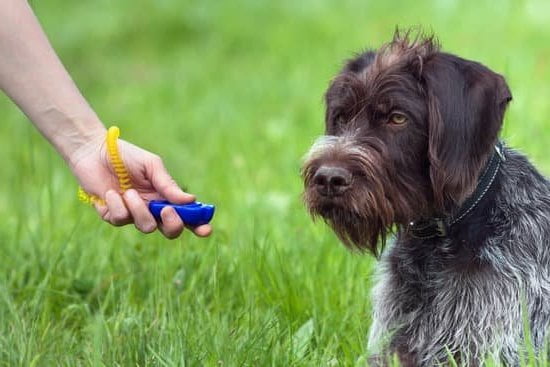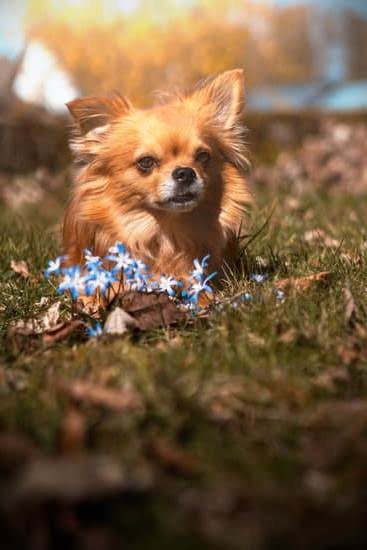Are you struggling with your dog’s tendency to chase squirrels? Many dog owners can relate to this common challenge, but the good news is that with the right training techniques, it is possible to modify this behavior. Understanding the reasons behind your dog’s instinct to chase squirrels and implementing effective training methods can make a significant difference in curbing this behavior.
Dogs have a natural inclination to chase small animals like squirrels due to their predatory instincts. While this behavior may seem harmless or even entertaining at first, it can pose certain dangers, such as potential altercations with other animals or getting lost in pursuit of the squirrel. In this article, we will explore various strategies for training your dog not to chase squirrels, ultimately ensuring their safety and your peace of mind.
To address this issue, it is crucial to delve into the root of the behavior and understand why dogs are drawn to chasing squirrels. Factors such as breed, age, and previous training can greatly influence this tendency in dogs. By gaining insight into these factors, you can tailor your approach to effectively train your dog in a way that suits their specific needs and natural inclinations.
Understanding the Root of the Behavior
Dogs have a natural instinct to chase small animals, including squirrels. This behavior can be traced back to their ancestors, who relied on hunting for survival. Even though dogs today may not need to hunt for food, this instinct remains ingrained in their DNA. Additionally, certain breeds are more prone to chasing squirrels due to their lineage, while younger dogs may exhibit this behavior as a result of high energy levels and curiosity.
The urge to chase squirrels can also be influenced by the dog’s environment and training. Dogs that are not properly socialized or trained may be more likely to engage in squirrel chasing behavior. The lack of mental and physical stimulation can also contribute to a dog’s inclination to pursue squirrels as a form of entertainment. It is essential for dog owners to recognize these underlying factors in order to address the behavior effectively.
As part of understanding the root of your dog’s squirrel chasing behavior, it is crucial to consider the impact of past experiences. If a dog has had previous encounters with squirrels that resulted in excitement or reinforcement of the behavior, it can further strengthen their drive to pursue these small creatures. By acknowledging these various factors, dog owners can gain insight into their pet’s behavior and take appropriate steps towards training and modifying this instinctive conduct.
Importance of Training
Training your dog not to chase squirrels is not only beneficial for the safety and well-being of the squirrel population but also for the safety of your dog. Chasing squirrels can lead to a range of dangers such as traffic accidents, getting lost, or encountering other aggressive animals. Therefore, it is crucial to understand the significance of training your dog to control this natural instinct.
Consistency in training is key when it comes to modifying your dog’s behavior. It’s essential to establish clear boundaries and expectations for your dog, making it important to reinforce these boundaries consistently. By consistently reinforcing positive behaviors and giving clear commands, you can effectively communicate that chasing squirrels is undesirable.
Moreover proper training can improve obedience and overall behavior beyond just preventing squirrel chasing. This means that investing time and effort into training can strengthen the bond between you and your dog while also making day-to-day activities with your pet more enjoyable.
| Benefits | Importance |
|---|---|
| Enhanced Safety | Dangers associated with squirrels |
| Better Obedience | Improvement in overall behavior |
Basic Obedience Training
Relevance of Basic Commands
Basic commands like sit, stay, and come are essential tools in managing your dog’s behavior, particularly when faced with distractions such as squirrels. Teaching your dog to sit and stay on command can help prevent them from lunging or running after squirrels when they appear. Similarly, the “come” command can be used to call your dog back to you if they start to show interest in chasing squirrels.
It’s important to practice these commands in various environments and situations to ensure that your dog understands and obeys them consistently. By doing so, you can lay the groundwork for effective squirrel-chasing prevention even in high-distraction environments like parks or wooded areas.
Tips for Reinforcing Commands
Consistency is key when reinforcing basic obedience commands. Use positive reinforcement such as treats, praise, and affection to reward your dog for following commands correctly. When practicing obedience training in the presence of squirrels or other distractions, it may be necessary to use higher value rewards to keep your dog focused on you rather than the tempting sight of a squirrel.
Additionally, it’s important to remain calm and composed during training sessions. Dogs are highly attuned to their owners’ emotions, so staying patient and relaxed can help prevent any anxious or excited behavior that could lead to chasing squirrels. With consistent practice and reinforcement, your dog can learn to prioritize following their commands over chasing squirrels.
Desensitization Techniques
Desensitization is a gradual process that involves exposing your dog to squirrels in a controlled and positive manner to decrease their reactions over time. This technique allows your dog to become desensitized to the sight, smell, and sound of squirrels, reducing their urge to chase them.
Step-by-Step Instructions
The first step in desensitizing your dog to squirrels is to start at a distance where your dog can see or sense the presence of a squirrel without reacting excessively. Use treats and praise to redirect your dog’s attention back to you when they notice the squirrel. Gradually decrease the distance between your dog and the squirrel as they become more comfortable and less reactive.
As your dog becomes more accustomed to the presence of squirrels, incorporate obedience commands such as “sit” or “stay” while they are in view of a squirrel. This will help reinforce their focus on you rather than the squirrel, ultimately reducing their desire to chase.
Consistency Is Key
Consistency is crucial when using desensitization techniques. It’s important to practice regularly and in different environments to ensure that your dog generalizes the training across various situations. Over time, your dog should become less fixated on squirrels and more responsive to your commands.
By consistently implementing desensitization techniques, you can effectively reduce your dog’s natural instinct to chase squirrels and redirect their behavior towards a more desirable response. Remember that every dog is unique, so patience and persistence are essential during this training process.
Use of Positive Reinforcement
The use of positive reinforcement is a highly effective method for modifying a dog’s behavior, including the instinctual urge to chase squirrels. By rewarding desired behavior with treats, praise, or toys, you can communicate to your dog that not chasing squirrels is the right choice. This method works by creating an association between the absence of squirrel chasing and something enjoyable, thereby encouraging your dog to resist the temptation.
When using positive reinforcement to deter squirrel chasing, it’s important to be consistent and timely with your rewards. Every time your dog refrains from pursuing a squirrel after giving the command to stop or come back to you, offer a treat or lavish praise as soon as they comply. This immediate reinforcement helps your dog understand exactly which behavior you are rewarding.
Examples of rewards that can be used to deter squirrel chasing include small, easily consumable treats such as bits of cooked chicken or commercial dog treats. It’s essential to use high-value rewards that are irresistibly enticing for your dog in order to compete with the allure of chasing squirrels. Additionally, verbal praise and petting can also be effective forms of positive reinforcement when used in conjunction with edible rewards.
Overall, by consistently reinforcing your dog’s good choices and showing them that obedience results in pleasant outcomes, you can effectively train them not to chase squirrels through positive reinforcement techniques. Remember that patience and perseverance are key during this training process as it may take time for your dog to fully grasp the desired behavior change through positive reinforcement.
Engaging Your Dog’s Mind and Body
When it comes to preventing your dog from chasing squirrels, engaging their mind and body in other activities can be highly effective. Here are some strategies to redirect your dog’s energy away from squirrel chasing:
- Mental Stimulation Games: Engage your dog’s brain with interactive toys such as puzzle feeders and treat-dispensing balls. These toys require problem-solving skills and can keep your dog entertained when indoors.
- High-Intensity Physical Activities: Provide your dog with vigorous exercise through activities such as fetch, agility training, or running alongside you while biking. Burning off excess energy can reduce the desire to chase squirrels.
- Obedience Training: Incorporate regular obedience training sessions into your routine to keep your dog mentally stimulated. Working on commands like “sit,” “stay,” and “heel” can help reinforce good behavior and provide mental stimulation for your dog.
By incorporating these activities into your daily routine, you can help satisfy your dog’s natural instincts in a positive way while reducing their desire to chase squirrels. Remember that consistency is key, and by keeping your dog engaged both mentally and physically, you can curb their instinct to chase after elusive squirrels.
Seeking Professional Help
While basic obedience training and desensitization techniques can be effective in curbing your dog’s instinct to chase squirrels, there are instances where seeking professional help may be necessary. If your dog’s behavior proves to be extremely challenging or if you have tried various methods without success, it might be time to consult a professional dog trainer.
A trainer with expertise in behavior modification can assess the root cause of your dog’s squirrel-chasing behavior and tailor a training plan to address it effectively.
When choosing a professional trainer, look for someone with experience in dealing with similar behavioral issues. Ask for recommendations from other pet owners or veterinarians, and thoroughly research the credentials and approach of potential trainers. It’s essential to find a trainer who uses positive reinforcement methods and has a good understanding of canine behavior.
In some cases, seeking help from an animal behaviorist or certified dog behavior consultant may be beneficial, especially if your dog’s squirrel-chasing behavior is deeply ingrained or if there are underlying psychological factors contributing to it. These professionals can offer a more specialized approach and provide insights into addressing the behavior from a holistic perspective.
Remember that seeking professional help is not a sign of failure but rather a proactive step toward ensuring the well-being of your dog and promoting harmony in your relationship with them.
Conclusion
In conclusion, training your dog not to chase squirrels is an essential aspect of responsible pet ownership. While it may require time and dedication, the benefits of training far outweigh the challenges. By understanding the root of this behavior, implementing basic obedience training, utilizing desensitization techniques, and incorporating positive reinforcement, you can effectively modify your dog’s behavior and keep them safe from potential dangers.
It’s important to remember that consistency is key when it comes to training your dog. Patience and perseverance are essential virtues during this process, as changing ingrained behaviors takes time. Every small success should be celebrated as progress towards the ultimate goal of preventing squirrel chasing.
Ultimately, seeking professional help from a certified dog trainer may be necessary in some cases, especially if the behavior persists despite consistent training efforts. Choosing the right trainer who understands the complexities of modifying behavior related to chasing squirrels can make a significant difference in the success of your training endeavors. With dedication and the right approach, you can ensure that your furry companion enjoys a safe and fulfilling life without constantly succumbing to their instinctual drive to chase squirrels.
Frequently Asked Questions
How Do I Train My Dog Not to Chase Animals?
Training a dog not to chase animals requires consistent and patient training. Start by teaching your dog a strong “leave it” command, reinforcing it with positive reinforcement like treats or toys.
Gradually introduce distractions like squirrels at a distance, and use the “leave it” command to redirect their attention back to you. It’s important to be persistent and practice in different environments to ensure your dog understands the behavior you expect from them.
Why Are Dogs Aggressive Towards Squirrels?
Dogs can be aggressive towards squirrels due to their natural hunting instincts. Squirrels are small, fast-moving creatures that trigger a dog’s predatory drive, leading them to bark, lunge, or even chase after them.
This behavior can also be exacerbated if a dog perceives squirrels as intruders in their territory, triggering protective or territorial aggression. Proper training and management can help control this behavior.
Do All Dogs Chase Squirrels?
Not all dogs chase squirrels, as some may have been socialized or trained from a young age not to do so. Breeds with strong herding or hunting instincts may be more prone to chasing squirrels, but individual personalities and experiences also play a role in whether a dog exhibits this behavior.
Additionally, age and physical condition can also influence a dog’s inclination to chase after squirrels.

Welcome to the blog! I am a professional dog trainer and have been working with dogs for many years. In this blog, I will be discussing various topics related to dog training, including tips, tricks, and advice. I hope you find this information helpful and informative. Thanks for reading!





